The following list highlights some of the best places to visiting in Tanzania. So if you are in Tanzania, I recommend visiting the following:
- Selous Game Reserve, Lindi, Tanzania
- Udzungwa Mountains, Morogoro, Tanzania
- Sanje Falls, Morogoro, Tanzania
- Tanganyika Lake, Kigoma, Tanzania
- Serengeti National Park, Mara and Simiyu, Tanzania
- Bismarck Rock, Mwanza, Tanzania
- Arusha National Park, Arusha, Tanzania
- Lake Manyara, Arusha, Tanzania
- Mount Meru, Arusha, Tanzania
- Ngorongoro National Park, Arusha, Tanzania
- Ol Doinyo Lengai Volcano, Arusha, Tanzania
- Tarangire National Park, Babati, Tanzania
- Kikuletwa Hotsprings, Kilimanjaro, Tanzania
- Kilimanjaro National Park, Kilimanjaro, Tanzania
- Lake Chala, Kilimanjaro, Tanzania
- Materuni Waterfalls, Kilimanjaro, Tanzania
- Mawenzi Peak, Kilimanjaro, Tanzania
- Mount Kilimanjaro, Kilimanjaro, Tanzania
- Kalambo Falls, Mbala, Tanzania
- Usambara Mountains, Tanga, Tanzania
- Isimila, Iringa, Tanzania
- Ngozi Crater Lake, Mbeya, Tanzania
The Best Places in Coastal Tanzania
1. Selous Game Reserve, Lindi
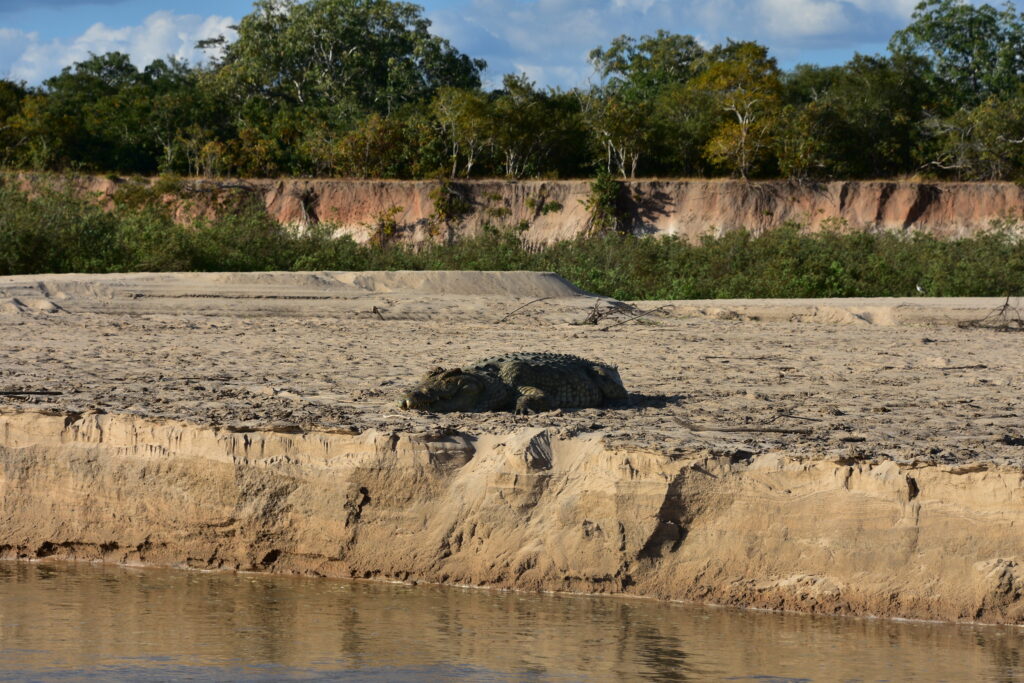
It is one of the largest game reserves in the world with an area of more than 50,000 square kilometres. It is home to one of the largest concentrations of elephants, giraffes, black rhinos, hippos and crocodiles, among many other species. Other animals of note in the Selous include lions, leopards, hyenas, wildebeest, impala and zebras. In the northern Selous hunting is completely forbidden and is reserved exclusively for photographic safaris. In Selous South there are several hunting blocks.
2. Udzungwa Mountains, Morogoro
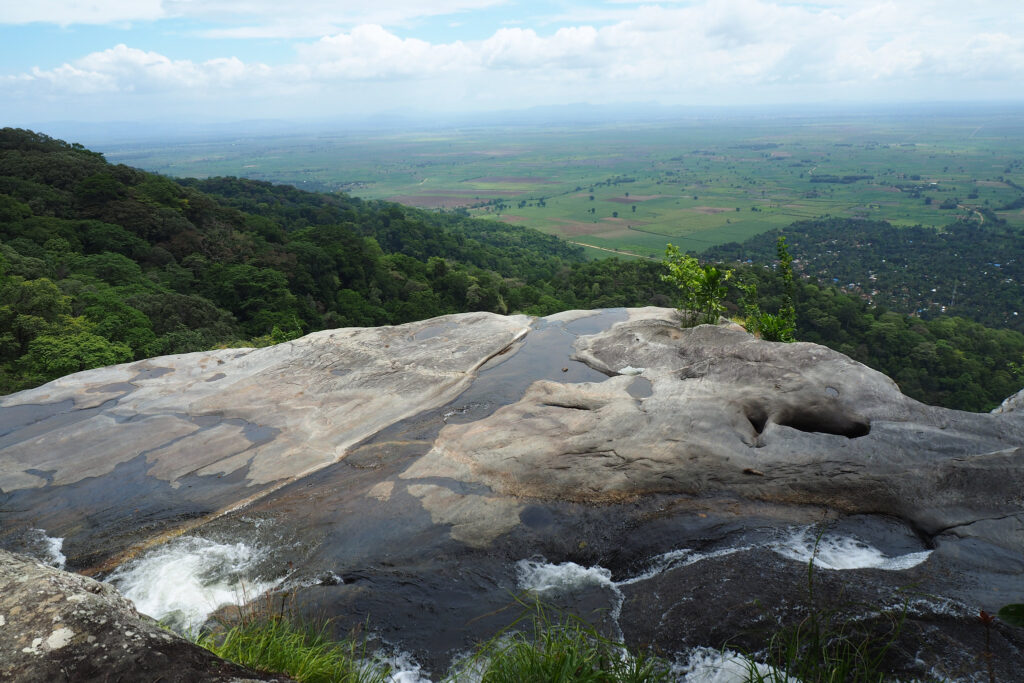
They are a mountain range located in the eastern part of the urban district of Dodoma, making them easy to visit. It is covered with tropical rainforests, grasslands and mountain forests, and is home to several protected species of flora and fauna that can be easily visited. The site is home to the Udzungwa Mountains National Park which is not accessible by vehicle but simply on foot. The park offers excellent hiking and deer-watching opportunities, as well as half-day and multi-day walks accompanied by professional guides.
3. Sanje Falls, Morogoro
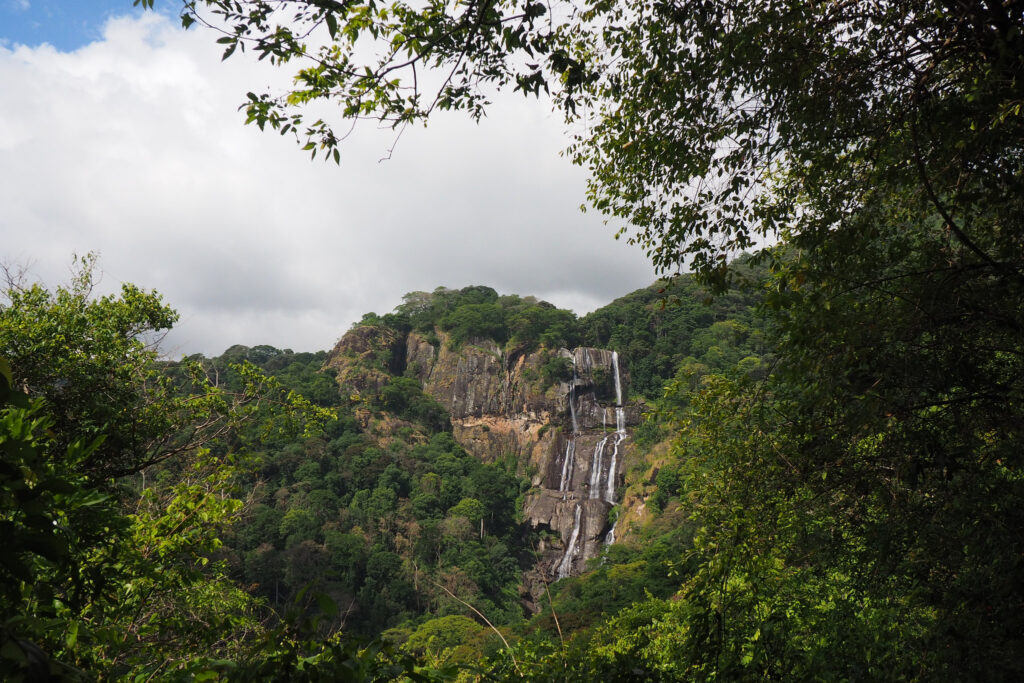
Located in the Udzungwa Mountains National Park, the waterfalls offer a breathtaking sunrise from their base, with the Kilombero Valley and its sugar cane and banana plantations at your feet. As well as observing a variety of flora and fauna on the way up, you have the opportunity to take a dip in the waterfalls’ pools.
The Best Places in Lakes Tanzania
4. Tanganyika Lake, Kigoma
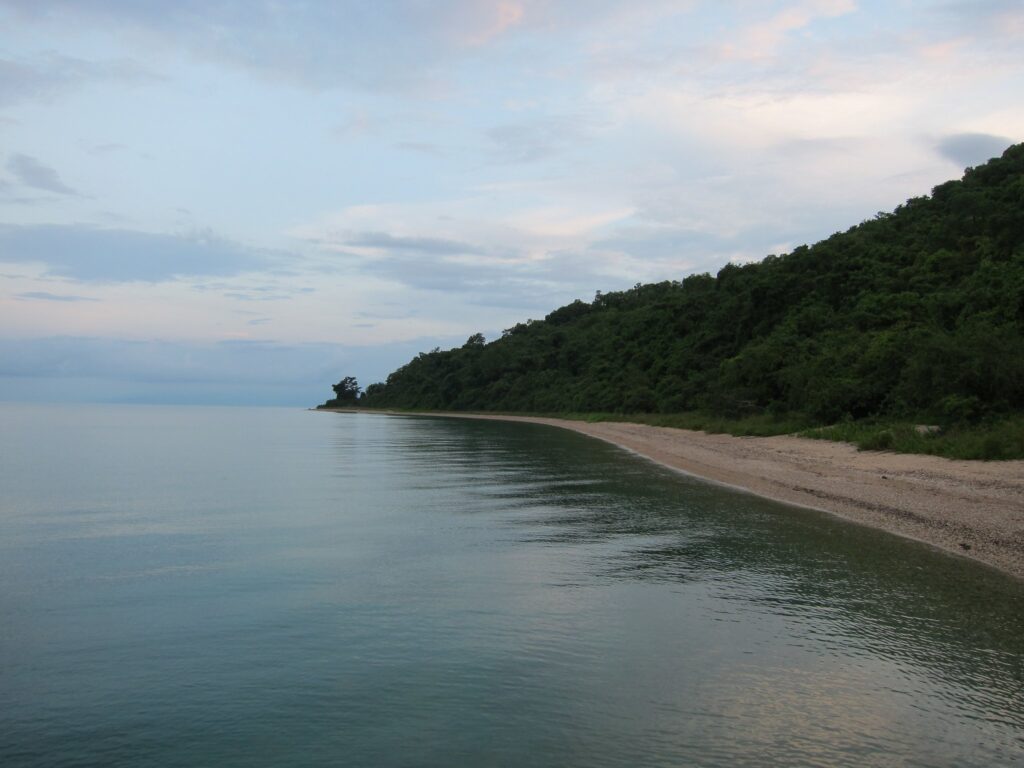
Lake Tanganyika is one of the most important lakes in Africa and holds 15% of the world’s fresh water. It is not only an attractive place for different activities, but also an important source of food for the region. Its tropical climate and most of its beaches and islets invite you to enjoy its waters, diving and snorkelling.
5. Serengeti National Park, Mara and Simiyu
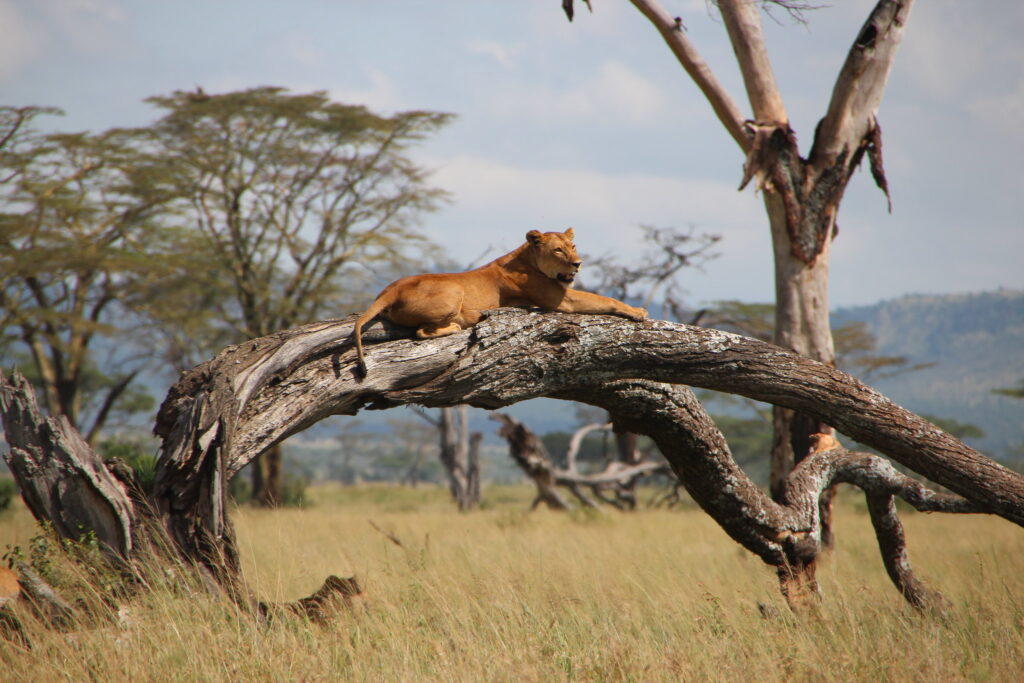
The Serengeti National Park is a must-see destination if you’re taking a trip to Tanzania. Its name means “endless plains” and you only have to take the first step into the park to understand why. Its plain is so vast that there are actually two countries that share it: Tanzania and Kenya. This park is one of the wildlife sanctuaries and all year round offers its visitors a unique experience, however, the migration in Serengeti is the most impressive spectacle of animal life, as the herds can reach more than ten kilometres in length and are closely followed by predators. If you are thinking of going on a photographic safari in Africa, there is no place more complete than the Serengeti National Park.
6. Bismarck Rock, Mwanza
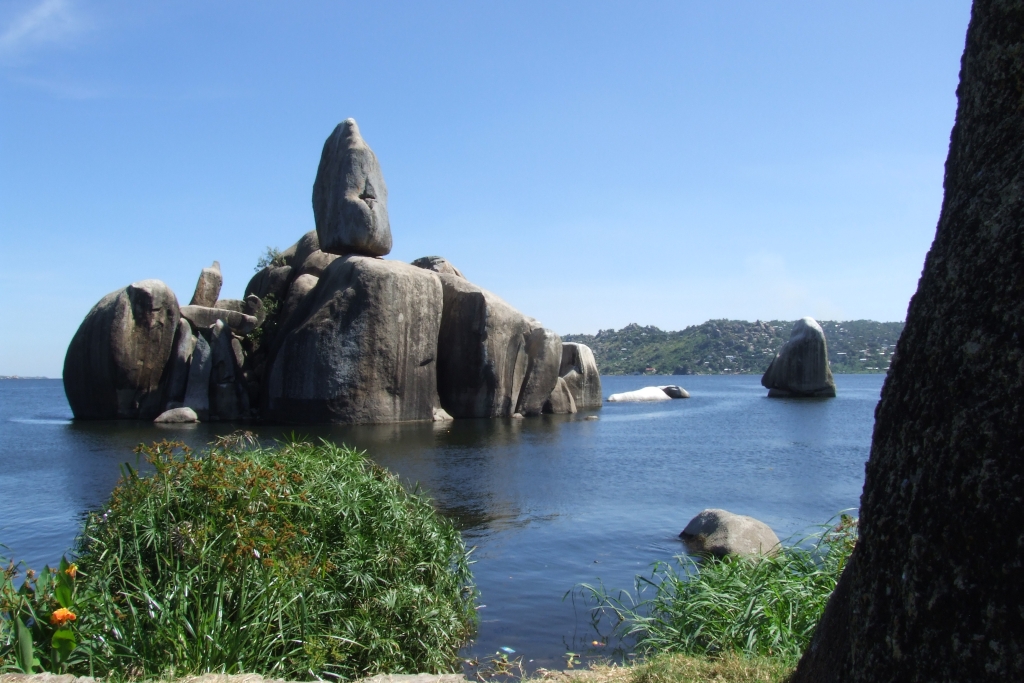
It is a geological formation of a rock in equilibrium, probably made over the years by wind and wave erosion. Bismarck Rock has become a symbol of Mwanza. It is situated on the waterfront next to the ferry port. The lakeside park, directly opposite this rock, is a meeting place for young people and families.
The Best Places in Northern Tanzania
7. Arusha National Park, Arusha
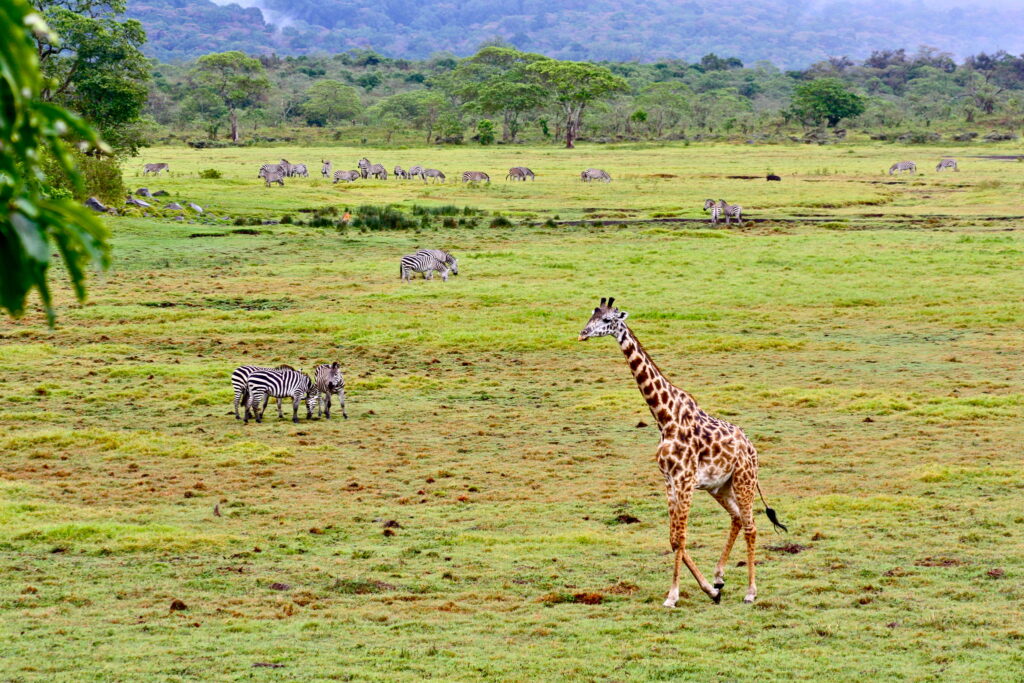
Arusha National Park is the smallest national park in northern Tanzania, but it is a perfect summary of all the region’s ecosystems: volcanoes, lakes, jungle forests and high mountains. The highlights of the park are the Ngurdoto Crater and the Momela Lakes. It is the only park in the north where walking safaris are allowed. There are no large predators within its boundaries, however, they are accompanied by an armed ranger as any wild species can become a threat. The park is popular with mountaineering enthusiasts as it is home to Tanzania’s second highest peak, Mount Meru, which is a perfect acclimatisation point for the summit of Kilimanjaro a few days later.
8. Lake Manyara, Arusha
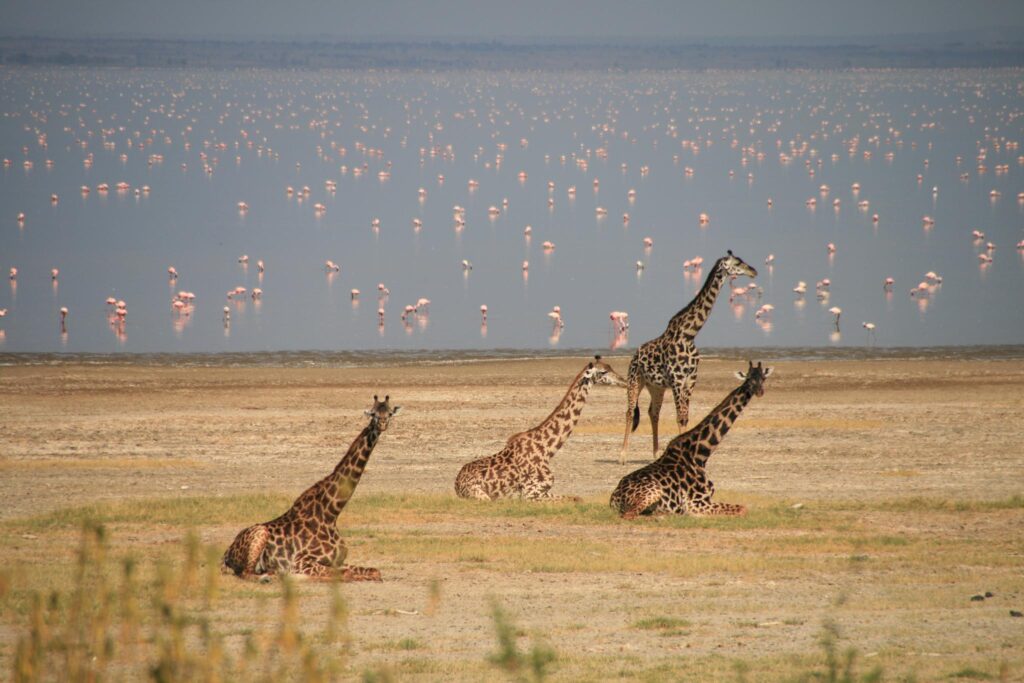
This beautiful Lake Manyara National Park is characterised by a variety of habitats that provide a great variety of fauna and flora in a small area. Lake Manyara is well known for its tree-climbing lions to escape insects as well as the thousands of flamingos that inhabit the lakeshore, and its trees teeming with baboons and baboons. Herds of elephant, buffalo, zebra, giraffe, wildebeest, antelope and waterbuck, hippopotamus, storks, marabou, rhinoceros and more than 400 different species of birds are also found here.
9. Mount Meru, Arusha
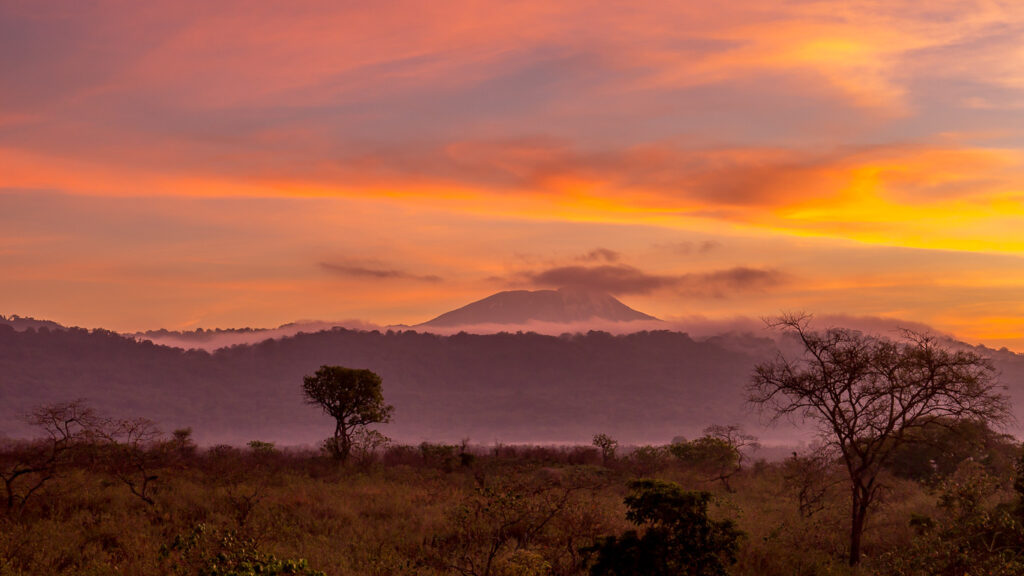
It is an impressive solitary volcano, ideal for those who do not have the time or budget to climb Kilimanjaro. It is one of the most beautiful volcanoes in Tanzania. One of the different experiences you will have when trekking Mount Meru is that it has a variety of wildlife that you will pass through on your way up. One of the benefits of trekking Mount Meru is that it is not crowded, a feeling that can be very rewarding for travellers who decide to undertake this adventure.
10. Ngorongoro National Park, Arusha
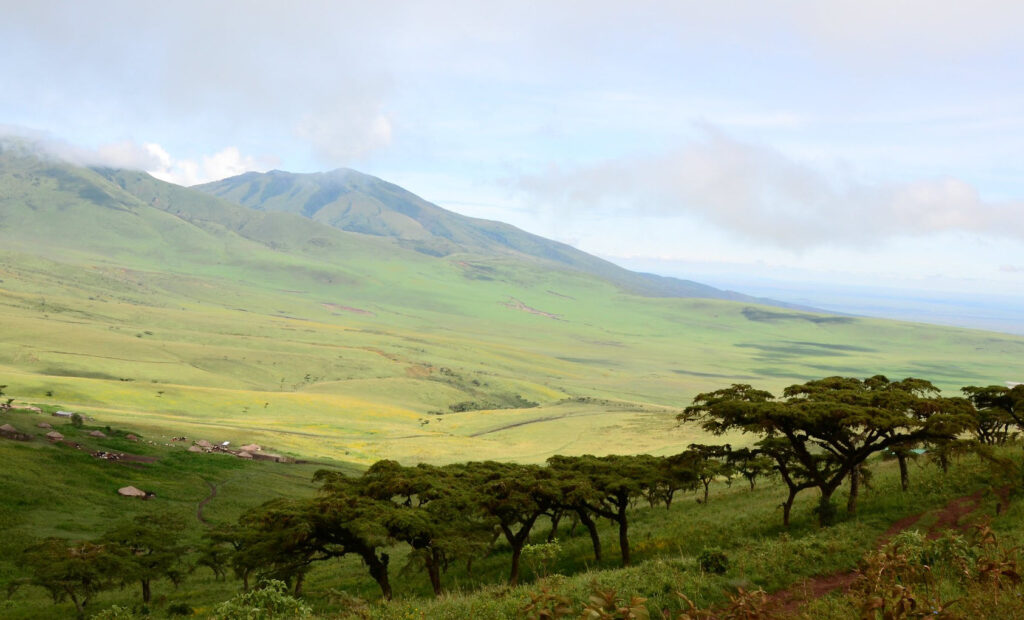
The Ngorongoro Conservation Area has 9 volcanoes. Within the crater that is usually visited is Lake Magadi, a unique place in the world for the ease of spotting all kinds of wildlife. One of the peculiarities of this paradise for wildlife lovers is that the crater has a microclimate that prevents the animals from having to migrate out of the crater. There are also ridges for those who love trekking, as these ridges surround the 400-metre crater, a place that provides the image of a sunrise that is hard to forget. The crater can be covered in 6 to 7 hours depending on how long you stand and watch the animals. You can sleep inside the conservation area and walk around it until you reach Serengeti.
11. Ol Doinyo Lengai Volcano, Arusha
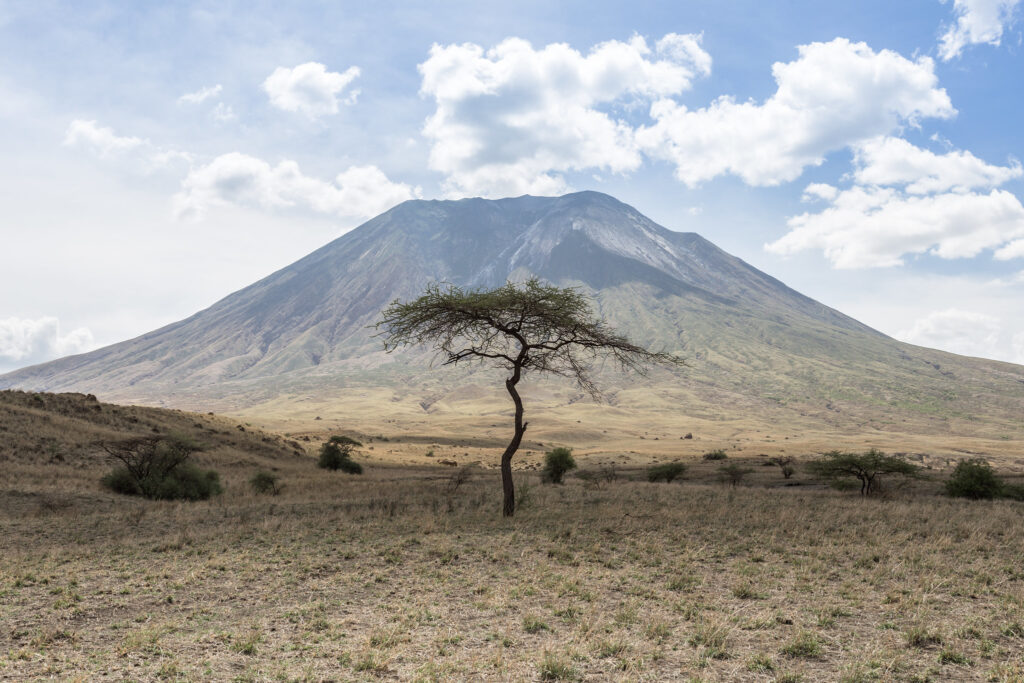
Oldonyo Lengai, Mount God to the Maasai, is an active volcano located south of Lake Natron and is known for spewing out the coldest lava on the planet. The lava flows black during the day, burns bright red at night, and turns white when it comes into contact with water. From its summit, on clear days, you can see Mount Kilimanjaro. It’s not a climb for everyone, a steep climb through a rocky landscape typical of volcanoes, so you need to be in good physical shape.
12. Tarangire National Park, Babati
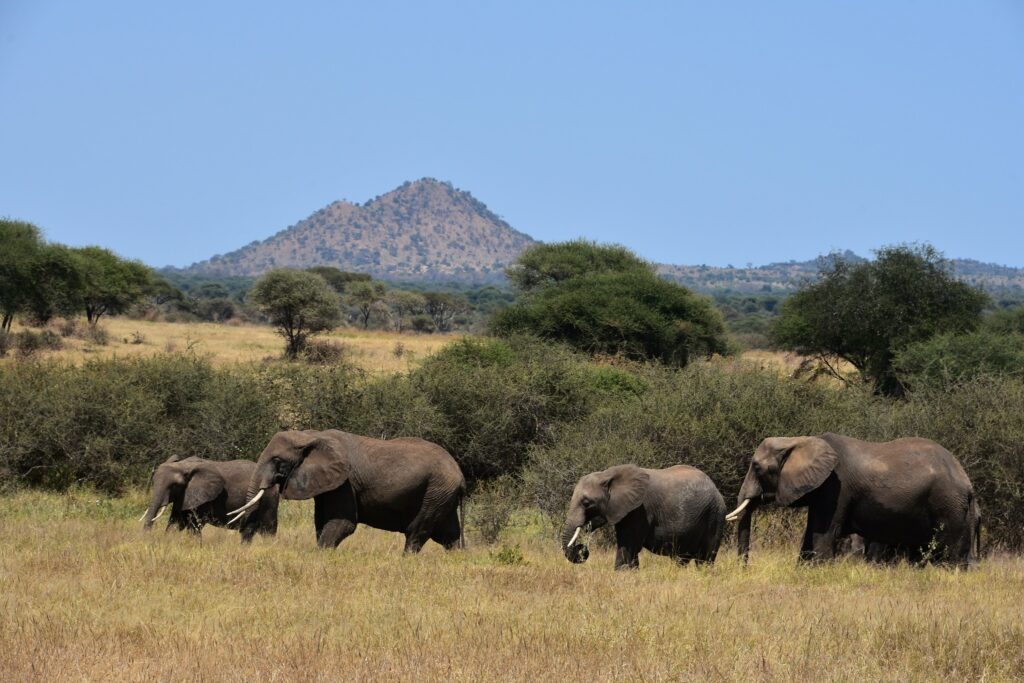
It contains one of the highest elephant population densities of any place in Tanzania, and its sparse vegetation, dotted with majestic baobabs and acacia trees, makes it an incomparably special place. But Tarangire is also home to large carnivores such as lions and leopards, as well as other animals including giraffes, zebras, Thomson’s gazelles, mongooses and even gerenuks. There are usually fewer safari tourists visiting Tarangire National Park compared to Serengeti National Park or the Ngorongoro Crater, making it a much more attractive visit.
13. Kikuletwa Hotsprings, Kilimanjaro

This hidden paradise, surrounded by incredible fig tree roots, is located between Moshi and Arusha. The hot springs at Kikuletwa form a natural oasis of water from Kilimanjaro and are regularly visited by tourists. This place is perfectly set up for bathing, with wooden stairs to climb in and out and even a swing to jump into the water. There is also a small market stall selling coconuts, Maasai flip-flops and local food.
14. Kilimanjaro National Park, Kilimanjaro
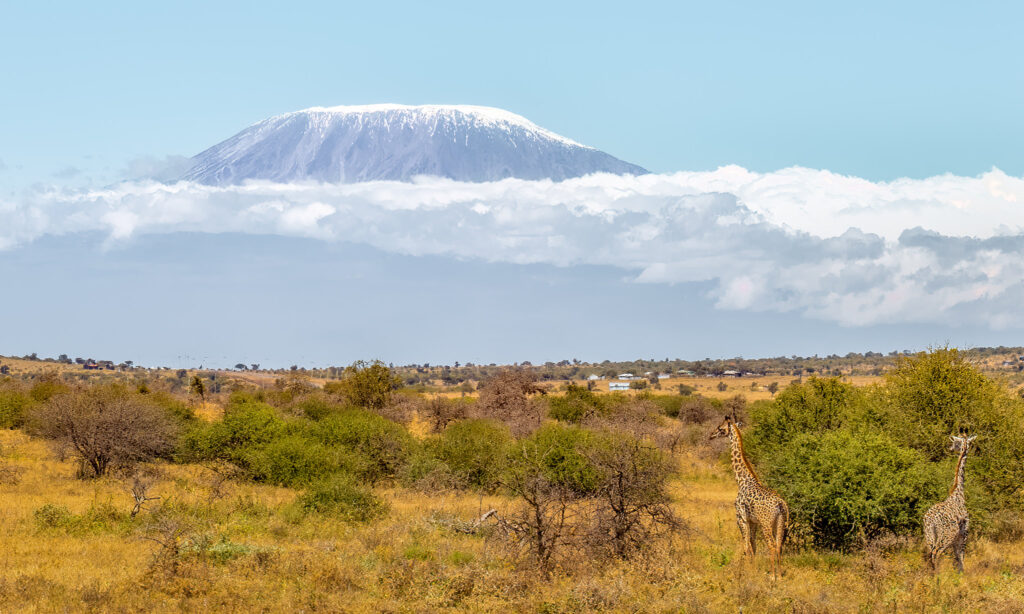
Kilimanjaro National Park is one of the symbols of Africa. It is the highest peak on the African continent and its summit reaches an imperious 5,895 metres. It is also one of the most accessible peaks in the world, which makes it an attraction for many visitors. The hike usually takes between 5 and 7 days and it is advisable not to do it in the months of April and May, as the rains turn the paths into muddy mud flats, making it very difficult to make any progress. Inside the park the most representative animals are elephants, buffaloes, elands, duikers and colobus, although the real kings are the invertebrates.
15. Lake Chala, Kilimanjaro
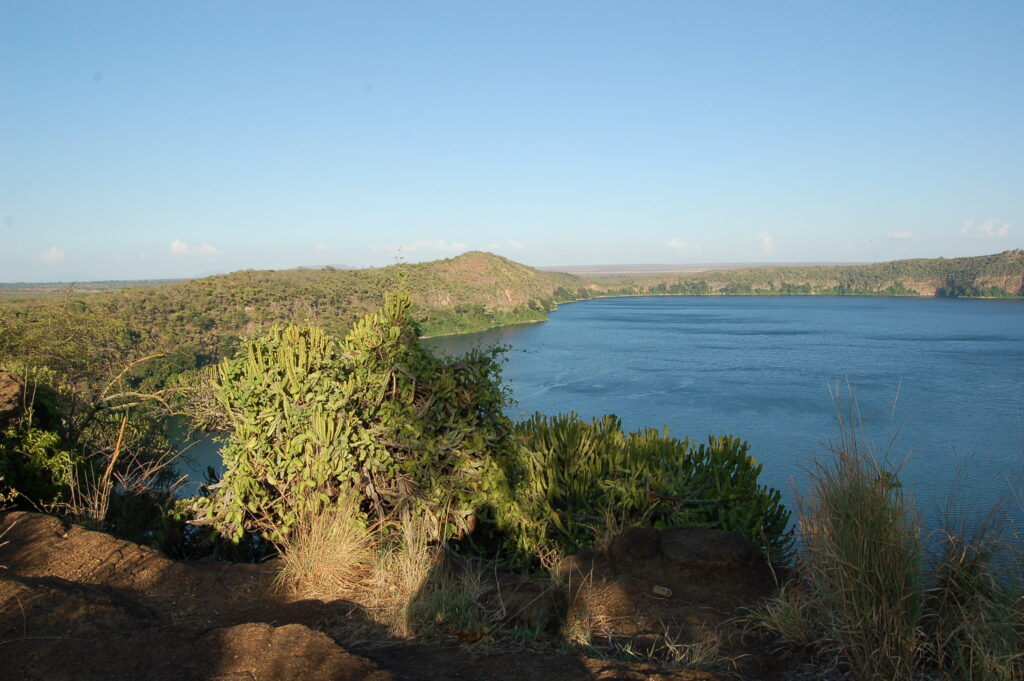
Lake Chala was formed in a caldera crater located on the border between Tanzania and Kenya. It is a place of unique beauty. The crystal clear water flowing from natural springs in the volcanic rocks makes it one of the best sights in the region. It is a lovely experience to relax and unwind with this amazing view while enjoying a delicious meal at the restaurant or bringing your own food.
16. Materuni Waterfalls, Kilimanjaro
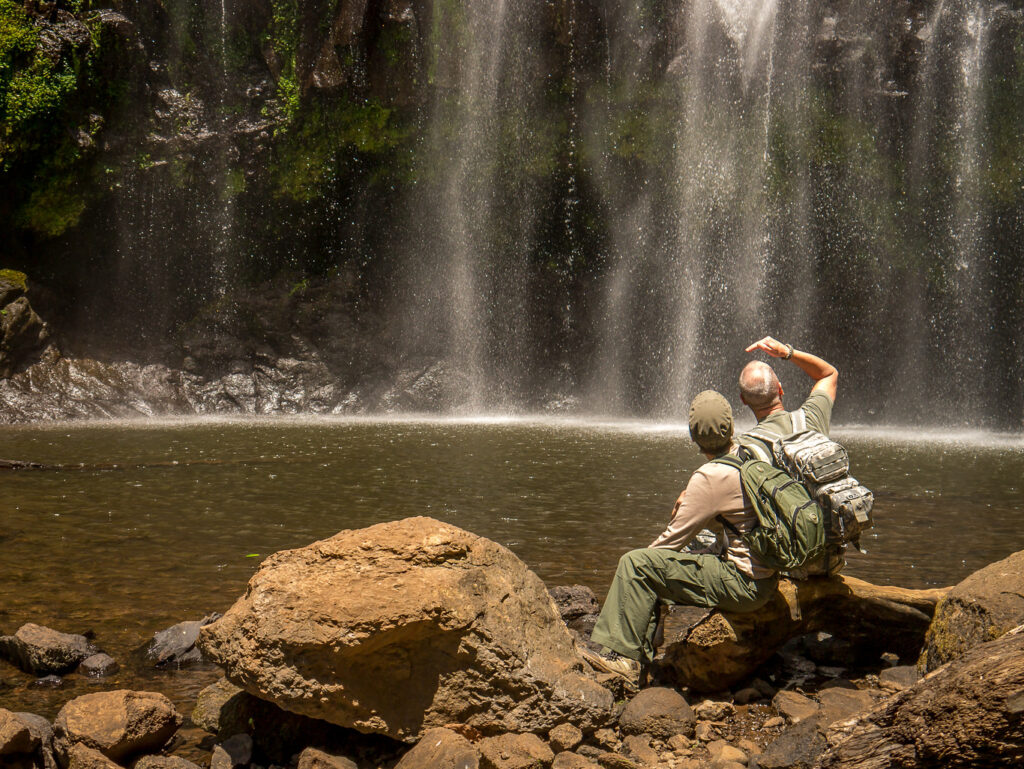
The trek to Materuni waterfalls takes about 40 minutes. It is a gentle walk that can be done by anyone with a minimum of fitness as there are no steep slopes or difficult obstacles. During this walk in the coffee-growing lands, you will see beautiful views of both Kilimanjaro and Mount Meru. You will also have the opportunity to meet the Chaga tribe, the inhabitants of the area.
17. Mawenzi Peak, Kilimanjaro
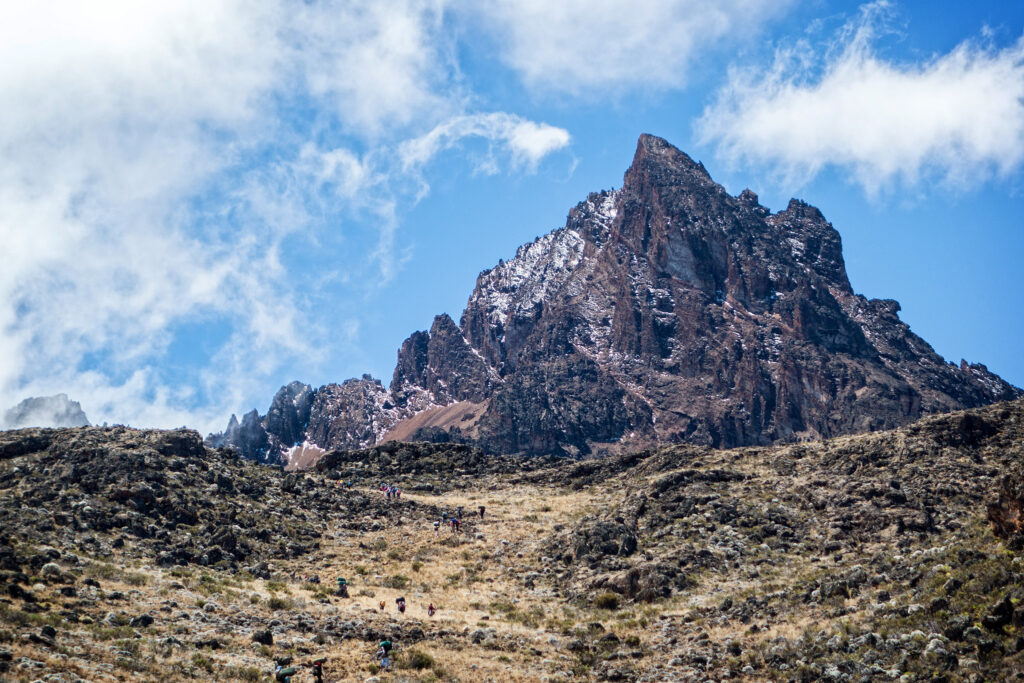
It is one of the three summits of Mount Kilimanjaro. It is the third highest peak in Africa and is located about 11 kilometres east of Kibo. Its highest point is Hans Meyer Point. However, the fragility of its rocks makes climbing it a very difficult task. Kilimanjaro is regulated by the Tanzanian authorities, which requires a permit, and it is compulsory to be accompanied by accredited local guides.
18. Mount Kilimanjaro, Kilimanjaro
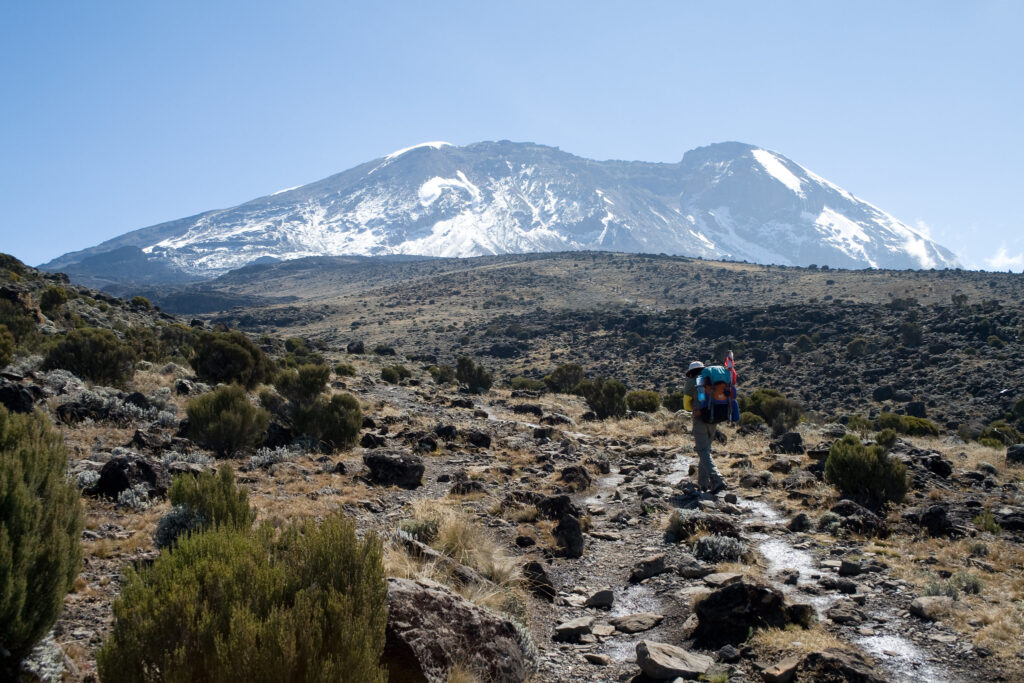
It is the highest mountain in Africa, standing alone above the surrounding savannah with its snow-capped peaks. A true wonder of nature, it is home to a myriad of life on its slopes. Its three peaks – Kibo, Mawenzi and Shira – are volcanic craters, with Uhuru Peak on Mt Kibo being the highest point. Climbing Kilimanjaro Peak is a challenge that thousands of people attempt every year. Kilimanjaro trekking allows you to reach the top of Kilimanjaro without the use of climbing techniques and equipment. Climbing Kilimanjaro is regulated by Tanzanian authorities and requires a permit, and it is compulsory to be accompanied by accredited local guides.
19. Kalambo Falls, Mbala
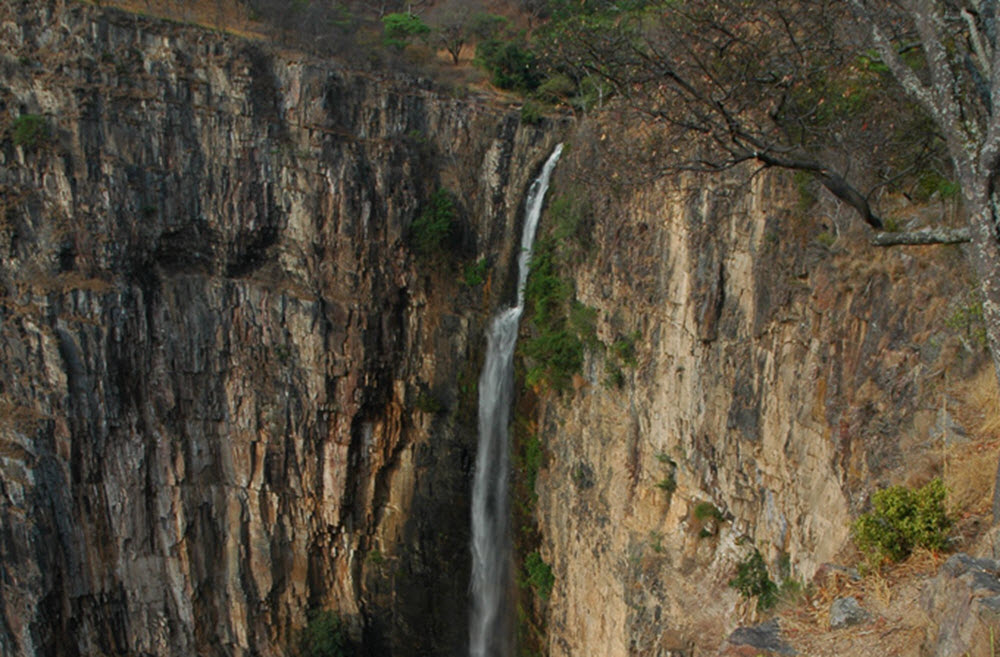
This waterfall is the second highest in Africa. It is home to archaeological sites of ancient African civilisations that have been declared a UNESCO World Heritage Site. Its waters end in the river of the same name and are quite pleasant to visit.
20. Usambara Mountains, Tanga
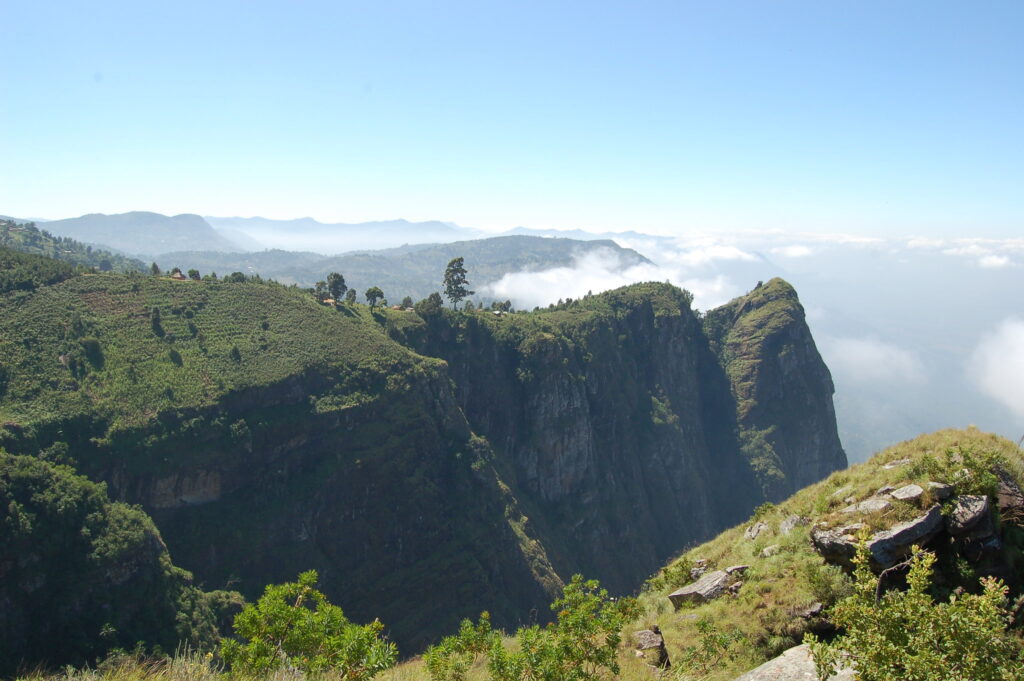
The Usambara Mountains are one of the most outstanding sites in northern Tanzania, consisting of two parts separated by a 4 kilometre wide valley. They are special because of the rainforest that covers most of them. The people who live there are mostly farmers who use the forest for medicinal plants and timber. The climate is cooler in the mountains and there are great panoramic views, where you can enjoy the enormous biodiversity. Not only is there a diversity of flora, you can also enjoy the many birds that can be found in this part of the world.
The Best Places in Southern Highlands Tanzania
21. Isimila, Iringa
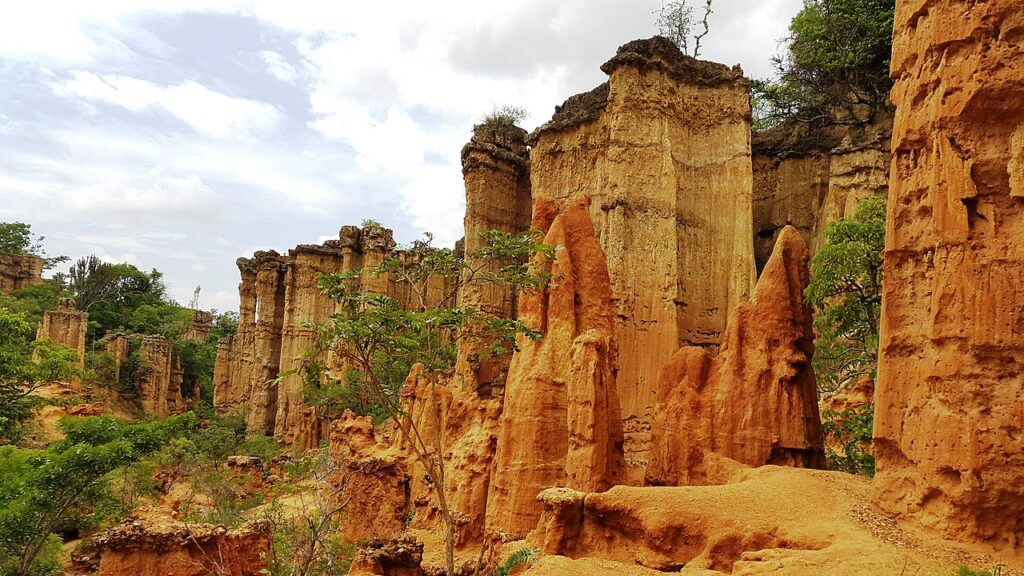
It is one of the most important sites with finds from the Stone Age. With tools that were used some 100,000 years ago. This site, despite its importance, is not a prominent tourist spot. There is a small museum explaining how the site was formed and the geological and archaeological history of the area. You can also see the canyon, where you will find an incredible landscape with surrealist tints, an immense gorge full of high stone pillars that the wind has been forging at will.
22. Ngozi Crater Lake, Mbeya
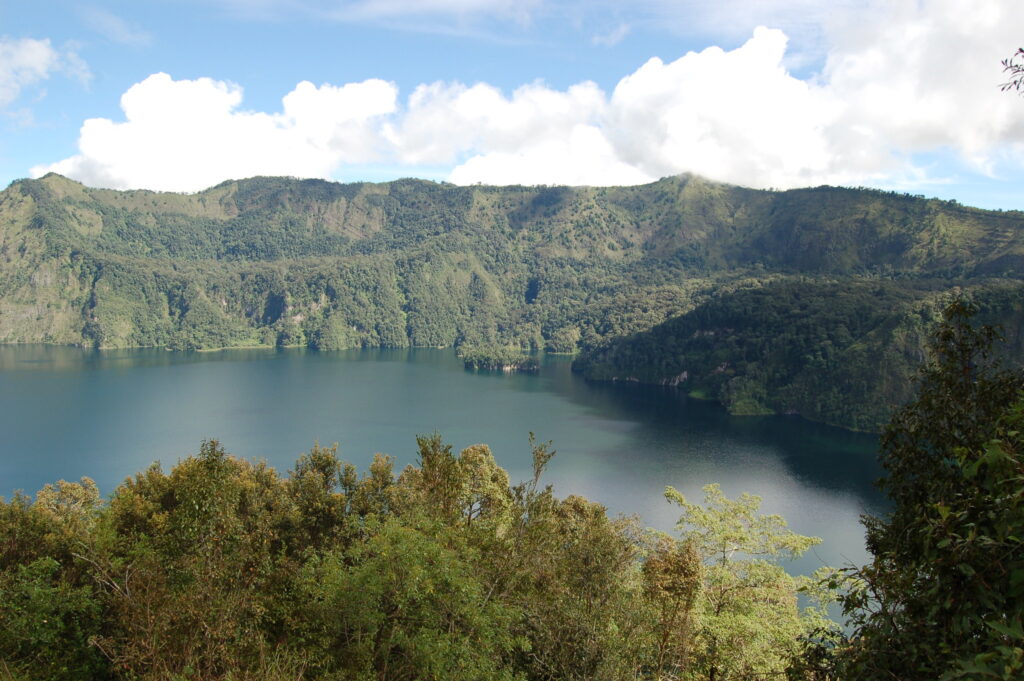
Lake Ngozi is the second largest crater lake in Africa. It sits at an altitude of over 2,000 metres in the caldera of a volcano and the hikes to the top are famous among travellers. There are many legends, the most popular being that of a group of German colonial soldiers who threw treasure into the waters of the lake. They had cast a spell on the lake to protect the gold and hinder anyone else’s efforts to retrieve it. Some variations of the myth suggest that this caused an emission of poisonous gases, while others claim that there is a 12-headed serpent that protects the treasure and surfaces on sunny days.
If you loved this article or found it useful, don’t forget to visit and subscribe to my social media for more useful content. Follow us on Google My Business, YouTube, Instagram, Pinterest, Twitter, Facebook or Reddit and subscribe to our receive our free website content.

